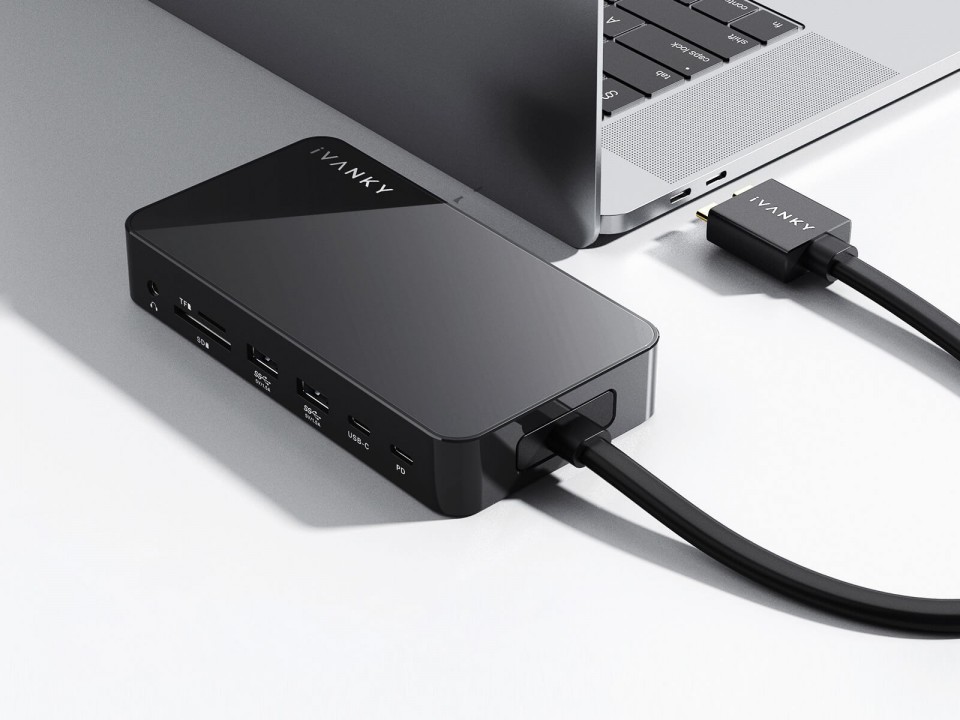

With the help of a docking station, you can even connect two monitors to your Mac at the same time. In other words, you can turn a single one of your Mac’s Thunderbolt 3 ports into several USB-C, USB 3.0, HDMI, Ethernet, and Display ports, with some docking stations even offering SD card slots. The way to do this is by using a docking station for your Mac.Ī docking station is a device that has one input port and many output ports of varying types. Furthermore, what if you wanted to connect two or more monitors to the MacBook? Well, there are actually a couple of ways to do it – you can use a dongle, or an adapter cable, but with these methods, you will need to occupy more than one Thunderbolt 3 port on your Mac, and since the computer already doesn’t have a lot of those, it is much better if you can connect all peripherals to your Mac through a single Thunderbolt 3 port. While Thunderbolt 3 is great in a variety of situations – it can be used for charging, data transfer, video output, and more, there are still a lot of situations in which you may need a different type of port in order to connect and use a certain device to your Mac.Ĭase in point, a lot of monitors that are used nowadays still require legacy ports such as HDMI and USB 3.0 to connect to a computer, and if you have such a monitor, you won’t be able to use it with your Mac. If you own a MacBook, especially one released in the past 5-10 years, chances are that it doesn’t have a whole lot of ports and the ones that it does have are likely limited to a couple of Thunderbolt-3 ports. However, there’s one significant downside inherent to most MacBooks, especially the newer models, and that is their lack of port variety. Top picks for MacBook Pro Docking Station Dual MonitorĪpple laptops are great work-computers due to their optimized OS, streamlined and user-friendly apps, and the fact that they rarely get any errors or bugs. Top picks for MacBook Pro Docking Station Dual Monitor.If you attach any adapter into the current version of the docking station, the adapter can be underneath the desk surface, so it is easier to hide all the cables and creates a much cleaner look.Įven without the adapter included into the Docking Station, the main functionality we wanted to achieve with this product, making it as easy as possible to switch between desk setup and working on the MacBook, was achieved. It simply didn’t look great no matter what we tried. We found that adding extra ports into the docking station made the entire station look very bulky and lots of cables were very visible at the back of the dock (above the desk). It is something that makes your desk look great. The model we are selling now is beautiful, because it has a very slim and minimal design, similar to the MacBook. You simply switch your HDMI adapter for a Display Port adapter $15-20 (and they are oftentimes quite unreliable if compared to single HDMI adapters)Įxample 2: 1 Year after buying the docking station you buy a new monitor which you want to connect via Display Port. The total cost is $40-75, while docks that support dual monitors usually cost $100-300. It is actually more cost-effective and more future-proof to purchase the adapter separately from the dock.Įxample 1: If you would like to connect 2 monitors via HDMI, you need 1 USB-C to HDMI adapter ($15) and 1 USB-C to HDMI adapter that also has a charging port for your MacBook charger ($25-50).

So those who only need few ports are paying extra for a lot of ports they do not really need. Most importantly, every added port makes the product more expensive. So it is very difficult to create a set of adapters that matches every user's need.īy sticking to 2x USB-C Ports, additional adapters, allow for flexibility so that the dock can support all kinds of setups, from simple to complex. Some need an Ethernet adapter and others don’t. There were 4 main reasons that made us decide against including the adapter:Įvery user has different needs. We wanted a solution to seamlessly switch between a desk setup and working on the MacBook itself, without touching any cables or crawling under the desk to unplug something. We were tired of plugging and unplugging cables. The first and most important thing to understand is why we made this dock in the first place. It’s also difficult to answer, so we want to take you a little bit behind the scenes into our thought process why we ended up not including a built-in adapter (we had actually completely designed and made prototypes with the adapter inside) We get this question a lot! It is something we have put a lot of thought into while designing this product.


 0 kommentar(er)
0 kommentar(er)
